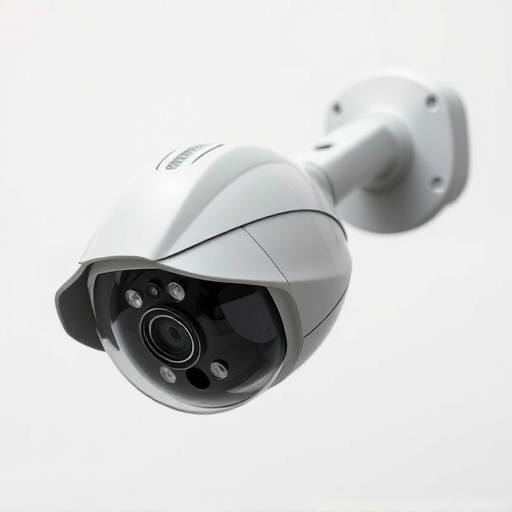Before deploying a real surveillance system, strategically place Professional Looking Dummy Surveillance Cameras to identify blind spots and assess visual impact. Choose replicas that mimic real cameras, with realistic features and adjustable settings. Install them, connect to a central control unit, and use software for live feeds and recording management. Thoroughly test camera clarity, audio (if available), and network connectivity. Ensure hardware security and cable labeling for easy maintenance.
Creating a convincing mock surveillance system isn’t just for movie sets anymore. This comprehensive guide empowers you to install a professional-looking dummy surveillance camera network. From understanding your security needs and planning your layout, to selecting the right cameras, setting up hardware, installing software, and final testing—we cover it all. Achieve a realistic, yet cost-effective security setup with our expert tips on choosing Professional Looking Dummy Surveillance Cameras.
- Understanding Your Needs and Planning the Layout
- Selecting the Right Dummy Cameras for Your System
- Setting Up the Hardware: A Step-by-Step Guide
- Installing Software and Configuring Settings
- Testing, Troubleshooting, and Final Touches
Understanding Your Needs and Planning the Layout
Understanding your needs is a crucial step before planning and installing any surveillance system, including mock or dummy cameras. Consider what areas you want to monitor – whether it’s a retail store, office building, or residential home – and identify potential blind spots where regular camera placement might not be effective. Professional-looking dummy surveillance cameras can serve as a strategic tool in this process. They allow you to assess the visual impact and deter potential intruders without the cost and complexity of a full security system.
Planning the layout involves carefully considering the positioning of each dummy camera for maximum effect. Take into account factors like lighting, obstructions, and field of view. Mimic real-world surveillance practices by placing cameras at various heights, angles, and distances to replicate a comprehensive monitoring setup. This thoughtful planning will ensure your mock surveillance system not only looks professional but also serves its intended purpose in creating a safer environment.
Selecting the Right Dummy Cameras for Your System
When setting up a mock surveillance system, choosing the right dummy cameras is pivotal to creating a convincing and professional-looking setup. Opt for professional-looking dummy surveillance cameras that closely mimic real security cameras in terms of design and functionality. These replicas should feature detailed features like realistic lenses, LED indicators, and durable housing to blend seamlessly with genuine equipment.
Consider your system’s scale and scope when selecting your dummy cameras. For a comprehensive mockup, invest in a variety of camera types, such as fixed, pan-tilt-zoom (PTZ), or bullet cameras, mirroring the diversity of real security installations. Ensure the cameras you choose are compatible with your overall system design and offer adjustable settings for customization, allowing you to tailor their behavior to fit your simulation needs perfectly.
Setting Up the Hardware: A Step-by-Step Guide
Setting up a mock surveillance system starts with selecting and installing professional-looking dummy surveillance cameras. The first step is to choose cameras that match your desired setup, whether it’s a single camera for a simple installation or multiple cameras for a more complex layout. Ensure each camera has all necessary components, including power cables, motion sensors (if required), and clear lines of sight to the areas you want to monitor.
Once the cameras are in place, connect them to a central control unit, which will manage video feed and recording. Follow the manufacturer’s instructions for proper wiring and configuration. Test each camera individually to verify its functionality, ensuring smooth operation before proceeding with the full installation. This meticulous setup process ensures your mock surveillance system appears realistic and effectively simulates actual security measures.
Installing Software and Configuring Settings
Installing the software is a crucial step in setting up your mock surveillance system, especially when utilizing professional-looking dummy cameras. Begin by downloading and installing the compatible software provided with your camera kit. This software will allow you to monitor live feeds, access recorded footage, and configure various settings to tailor the system to your needs.
Once installed, take time to familiarize yourself with the interface and configure the settings accordingly. Adjust resolution, frame rate, and detection zones to ensure optimal performance. Customizing these settings enables you to create a realistic surveillance environment, making it an invaluable tool for training, testing, or creating a convincing security setup without the need for actual cameras.
Testing, Troubleshooting, and Final Touches
Testing
After installing your professional-looking dummy surveillance cameras, it’s crucial to conduct thorough testing. Start by ensuring each camera captures clear footage and accurately reflects real-time conditions. Adjust camera angles, zoom levels, and sensitivity settings as needed. Verify that video feeds are stable with minimal lag or interruptions. Test audio functionality if equipped, ensuring clear audio transmission. This initial check ensures your system operates optimally before finalizing the installation.
Troubleshooting and Final Touches
If any issues arise during testing, address them promptly. Common problems include poor network connectivity, camera misalignment, or software glitches. Check cable connections, router configurations, and power supplies to resolve physical faults. For software-related hiccups, update firmware, reinstall applications, or consult manufacturer support for advanced troubleshooting techniques. Once all cameras function seamlessly, finalize the setup by securing mounting hardware, labeling cables neatly, and ensuring easy accessibility for future maintenance.
Creating a convincing mock surveillance system is within reach with the right guide. By understanding your needs, selecting high-quality professional-looking dummy cameras, and following meticulous hardware and software setup procedures, you can deploy a realistic and cost-effective security solution. Testing, troubleshooting, and making final adjustments will ensure your system operates seamlessly. With this step-by-step approach, you’ll be able to install a mock surveillance system that looks every bit as professional as the real thing.
